THE D
TABLET
Glyph line Db5 carries 14 days (glyphs):
|
Side b: |
|
March 1 (61) |
Liberalia
(77) |
March 31
(90) |
|
April 15
(105) |
April 30
(120) |
May 14 (134) |
|
Db1-1 (127) |
Db2-1 (143) |
Db3 (156) |
Db4
(171) |
Db5 (186) |
Db6 (200) |
|
61 = 127 -
126 |
77 = 143 -
66 |
90 |
105 = 171 -
66 |
120 |
134 = 200 -
66 |
|
16 |
13 |
15 |
15 |
14 |
13 |
|
29 |
44 |
29 |
42 |
|
44 + 42 = 86 |
|
134 + 12 =
146 = 2 * 73 → Sept 30 (273 = 3 * 91 = 39 weeks)
350 + 14 =
364 = 512 - 146
512 = 8 * 64 |
And
May 1 (121) - Beltane - ought to be at Db5-3:
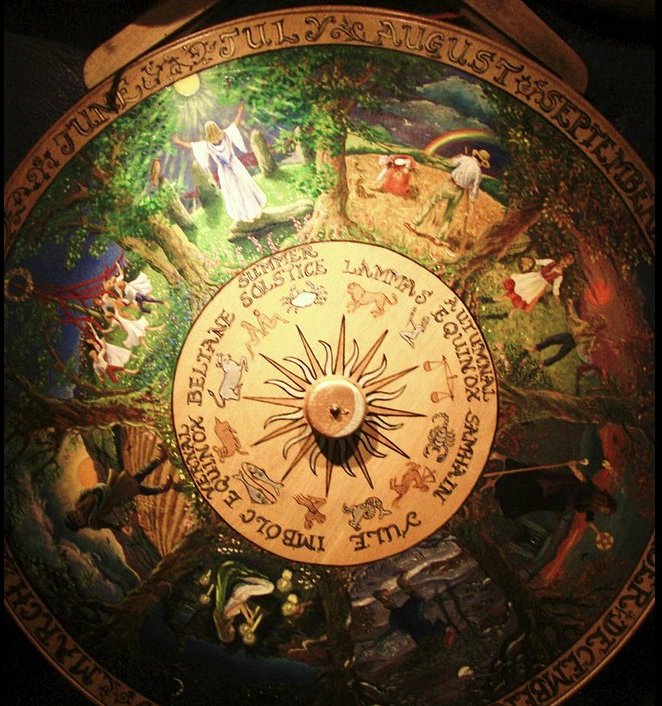
|
April 24 |
25 (→ Mercury) |
26 |
27 |
28 (118 = 4
* 29½) |
 |
 |
 |
 |
 |
|
Db4-11 (181) |
Db4-12 |
Db4-13 (→ 14 * 29½) |
Db4-14 (171
+ 13) |
Db4-15 (185) |
|
*217 |
FOMALHAUT |
*219 |
η Centauri (*220.4) |
*221 (→ 125
+ 86) |
|
*34 |
ξ Arietis
(*35.0) |
*36 |
*37 |
*38 = *221 - *183 |
|
Kuukuu |
Ringiringi
|
Nonoma |
Uure |
Makoi |
|
... Hau Maka spoke to his first-born son [atariki] Ira,
to Raparenga, and also to the sons of Hua Tava - namely, Kuukuu
A Hua Tava, Ringiringi A Hua Tava, Nonoma A Hua Tava, Uure A Hua
Tava, and Makoi A Hua Tava. Hau Maka said [he ki] to [kia]
Ira: 'Take the crew and launch your canoe; set sail and look for
the land in the direction of the rising sun (a roto i te raa)
... [E:15]
... Old-Spider then
took the snail, placed it in the west of the shell, and
made it into the moon. Then there was a little light,
which allowed Old-Spider to see a big worm. At her
request he opened the shell a little wider, and from the
body of the worm flowed a salted sweat which collected
in the lower half-shell and became the sea. Then he
raised the upper half-shell very high, and it became the
sky. Rigi, the worm, exhausted by this great
effort, then died ... |
|
April 29 (118 + 1) |
30 (120) |
May 1
(Beltane) |
 |
 |
 |
|
Db5-1 (186) |
Db5-2 (126 +
61) |
Db5-3 (188) |
|
RIJL AL AWWA |
*223 |
ZUBEN
ELGENUBI |
|
KAFFALJIDHMA |
*40 |
BHARANI
|
|
 |
 |
 |
|
ariki |
May 1 (11 *
11) |
rima aueue |
|
...when the new moon appeared women
assembled and bewailed those who had died since the last
one, uttering the following lament: 'Alas! O moon! Thou
has returned to life, but our departed beloved ones have
not. Thou has bathed in the
waiora a Tane, and had thy life renewed, but
there is no fount to restore life to our departed ones.
Alas'
... |
| Aue
Ah, alas. Aueue,
oh. P Pau., Ta.: aue, alas. Mgv.: aue,
auhe, alas. Mq.: aue, oh, alas;
auhe, a sigh. Exclamation in general
representing the most primordial type of speech, it
seems that this may be reduced to recognizable
elements. The e is throughout these languages
a vocative or hailing sign, commonly postpositive in
relation to the person hailed. In the examination of
au we have shown that the primal first person
singular designation is u. With the
comparatively scanty material afforded by this
vocabulary we may not attempt ot define the use of
a but we have no hesitation in noting that
proof based on wider studies will show it to have,
inter alia, a characteristic function as a
word-maker. In a very high degree, then, a-u-e
is represented by a common English interjection 'oh
my!' in which oh = a, my = u, and e
= !. Churchill.
What is this cry
which our primitive islanders share with the
animals? Look at its elements, all full-throated.
First we have a, the sound of mouth open,
fauces open, lungs full of air. As air expires the
sound recedes in the mouth towards the palate and we
find the u. Last comes the conscious finish
of the utterance, the muscles begin to retract, the
sound-making point is forced forward and the sound
is e. If the man had but a few more cubic
centimeters of lung capacity he could attain cow
volumne for his cry, or interjection, since it
amounts to the same thing. Churchill 2. |
| Ue
Uéué,
to move about, to flutter; he-uéué te kahu i te
tokerau, the clothes flutter in the wind;
poki oho ta'e uéué, obedient child. Vanaga.
1. Alas. Mq.: ue,
to groan. 2. To beg (ui).
Ueue: 1.
To shake (eueue);
kirikiri ueue,
stone for sling. PS Pau.:
ueue, to
shake the head. Mq.:
kaueue, to shake. Ta.:
ue, id.
Sa.: lue,
to shake, To.: ue'í,
to shake, to move;
luelue, to move, to roll as a vessel in a
calm. Niuē: luelue,
to quake, to shake. Uvea: uei, to shake;
ueue, to move. Viti: ue, to move in a
confused or tumultous manner. 2. To lace. Churchill. |
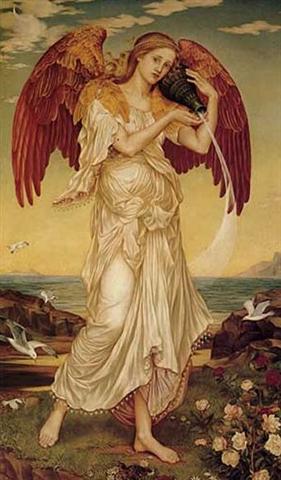
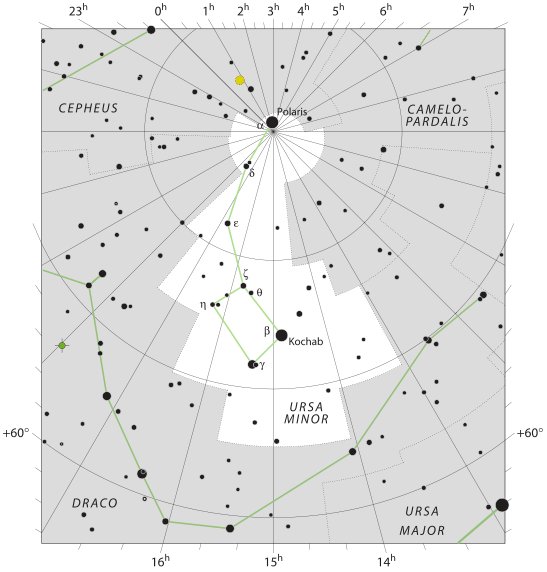
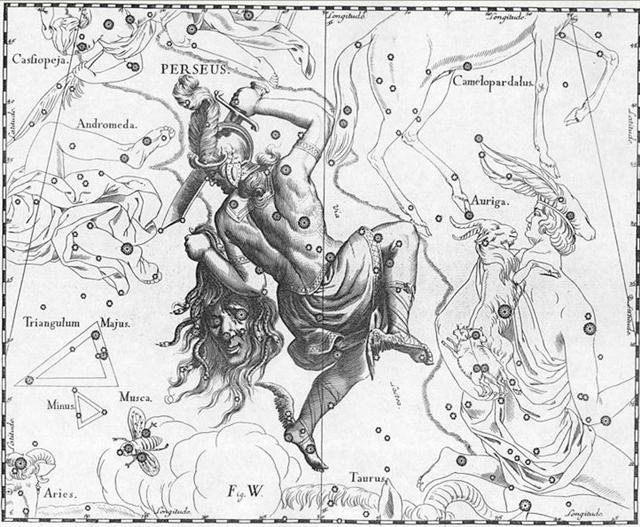
|
May 11 |
12 (132 = 2 * 66) |
 |
 |
|
Db5-13 (2 * 99) |
Db5-14 (199) |
|
NUSAKAN (*234.0) |
GEMMA
SIRRAH |
|
*51 |
*52 |
... In other words, the ancient Druidic religion based on the
oak-cult will be swept away by Christianity and the door - the
god Llyr - will languish forgotten in the Castle of Arianrhod,
the Corona Borealis. This helps us to understand the
relationship at Rome of Janus and the White Goddess Cardea who
is ... the Goddess of Hinges who came to Rome from Alba Longa.
She was the hinge on which the year swung - the ancient Latin,
not the Etruscan year - and her importance as such is recorded
in the Latin adjective cardinalis - as we say in English
'of cardinal importance - which was also applied to the four
main winds; for winds were considered as under the sole
direction of the Great Goddess until Classical times ...
Nusakan (β Corona Borealis)
means 'Pauper's Bowl' and one thing is certain - it would
be empty!
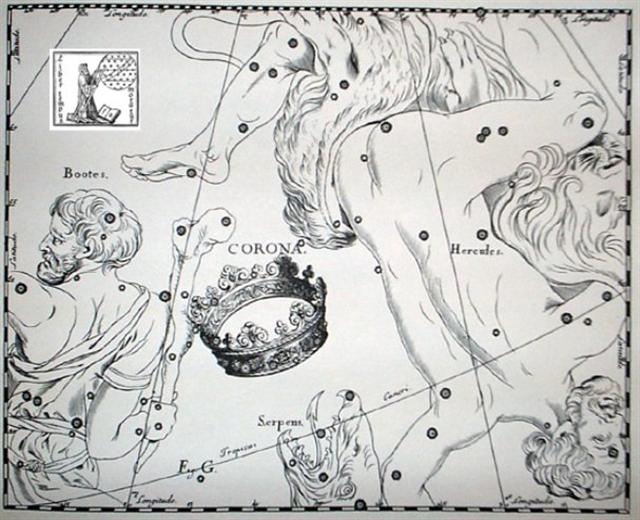
|











